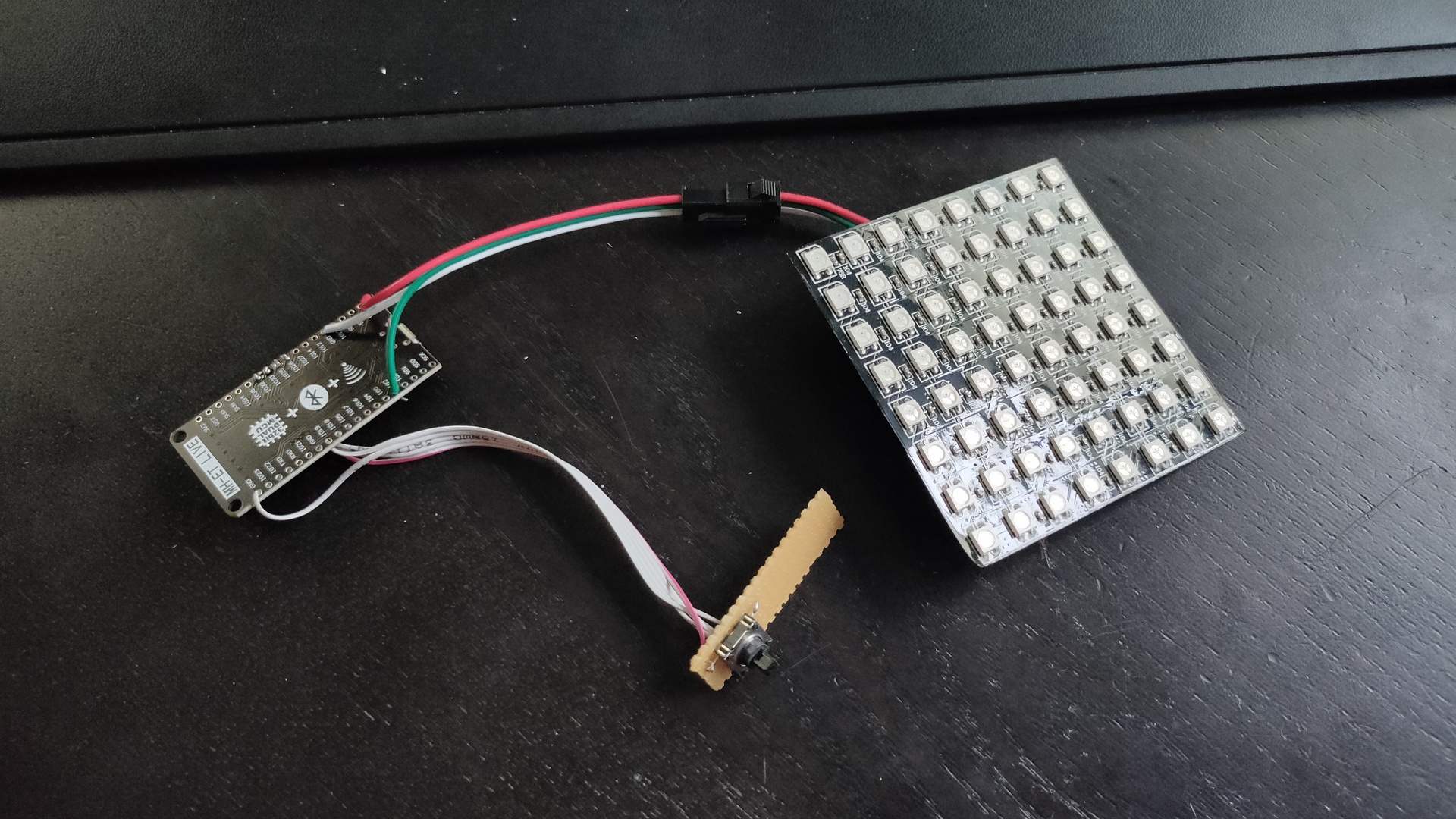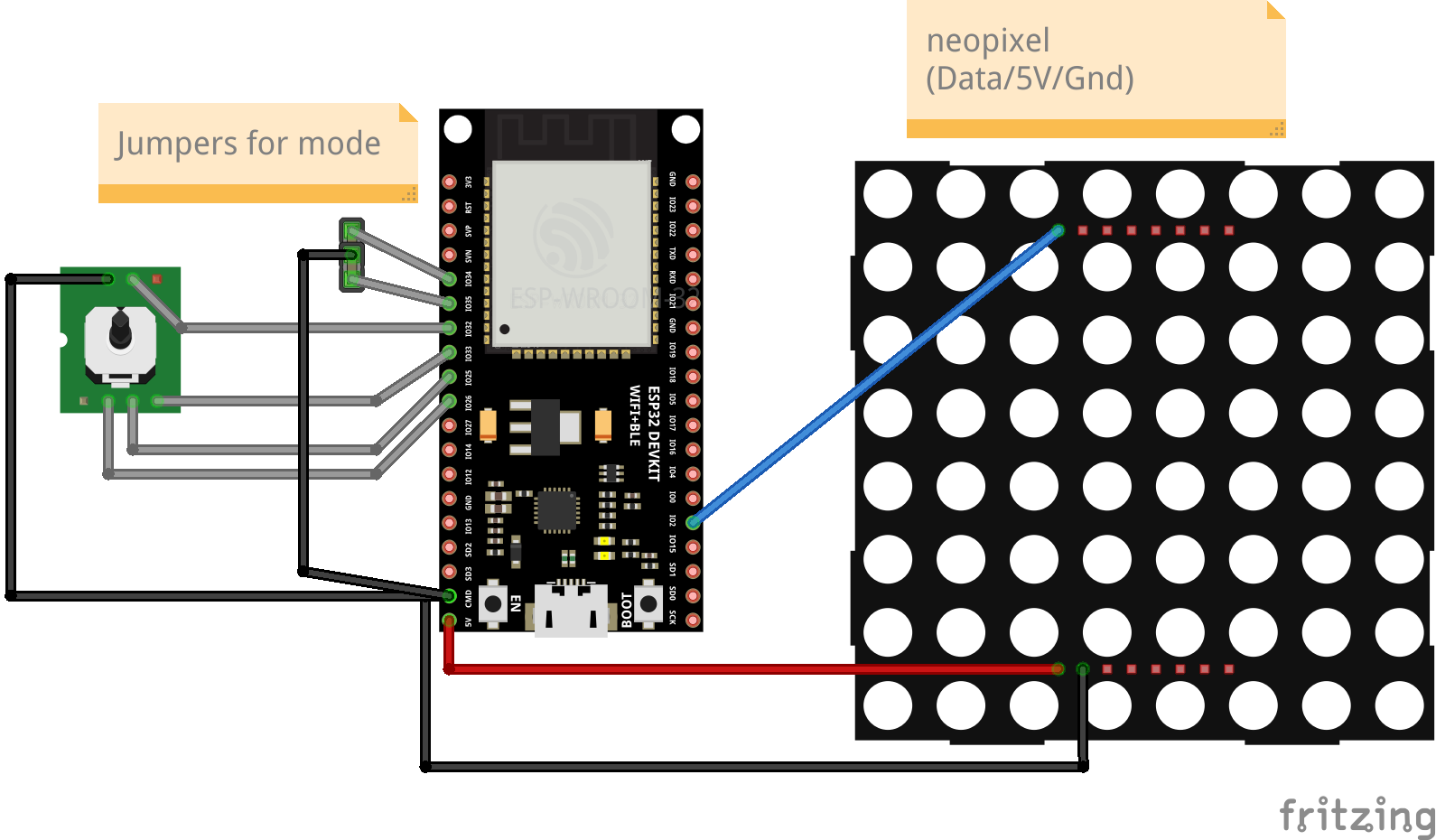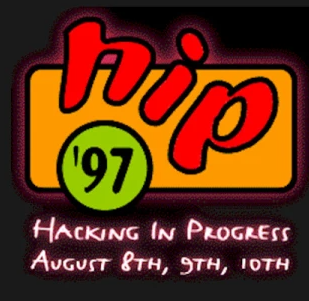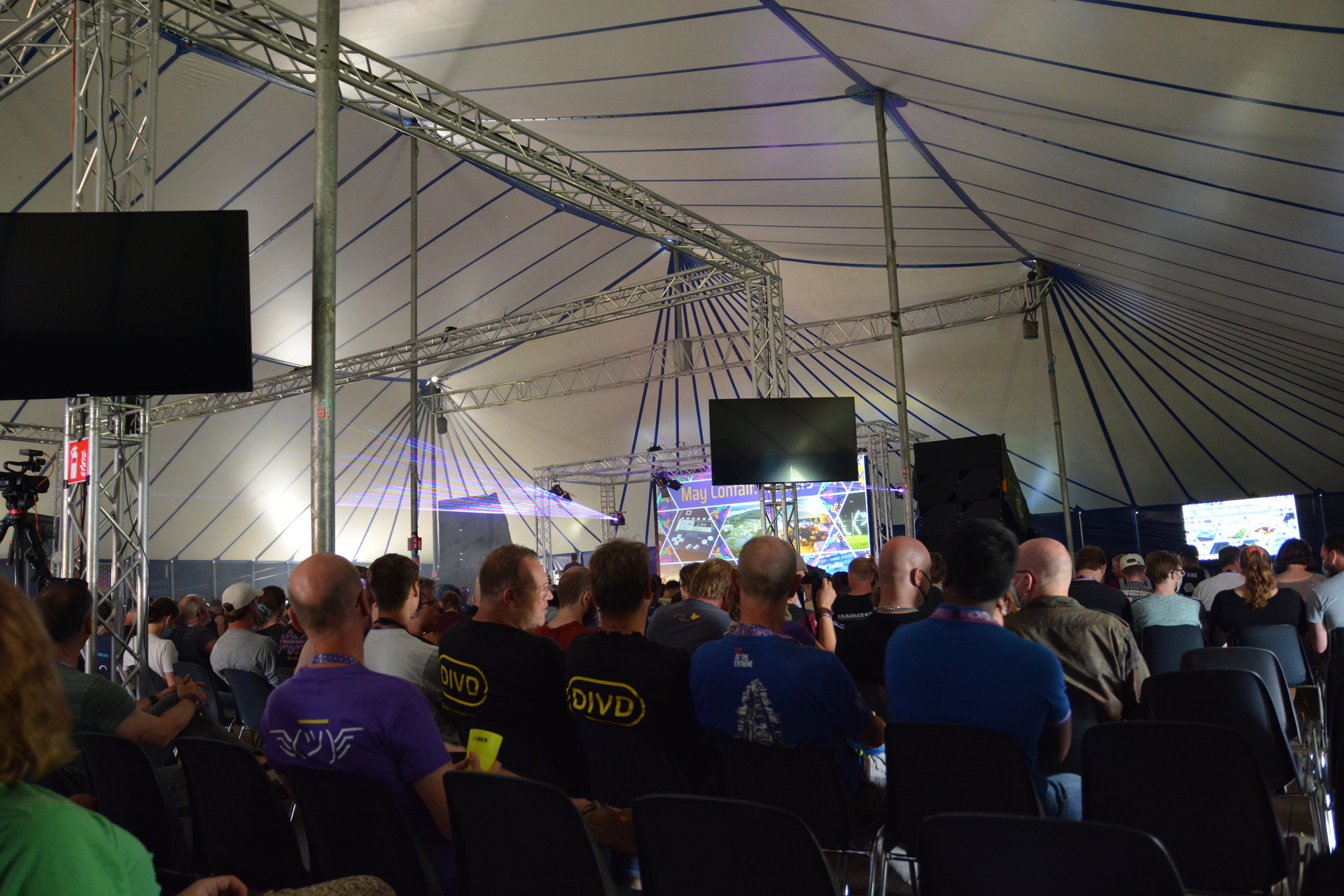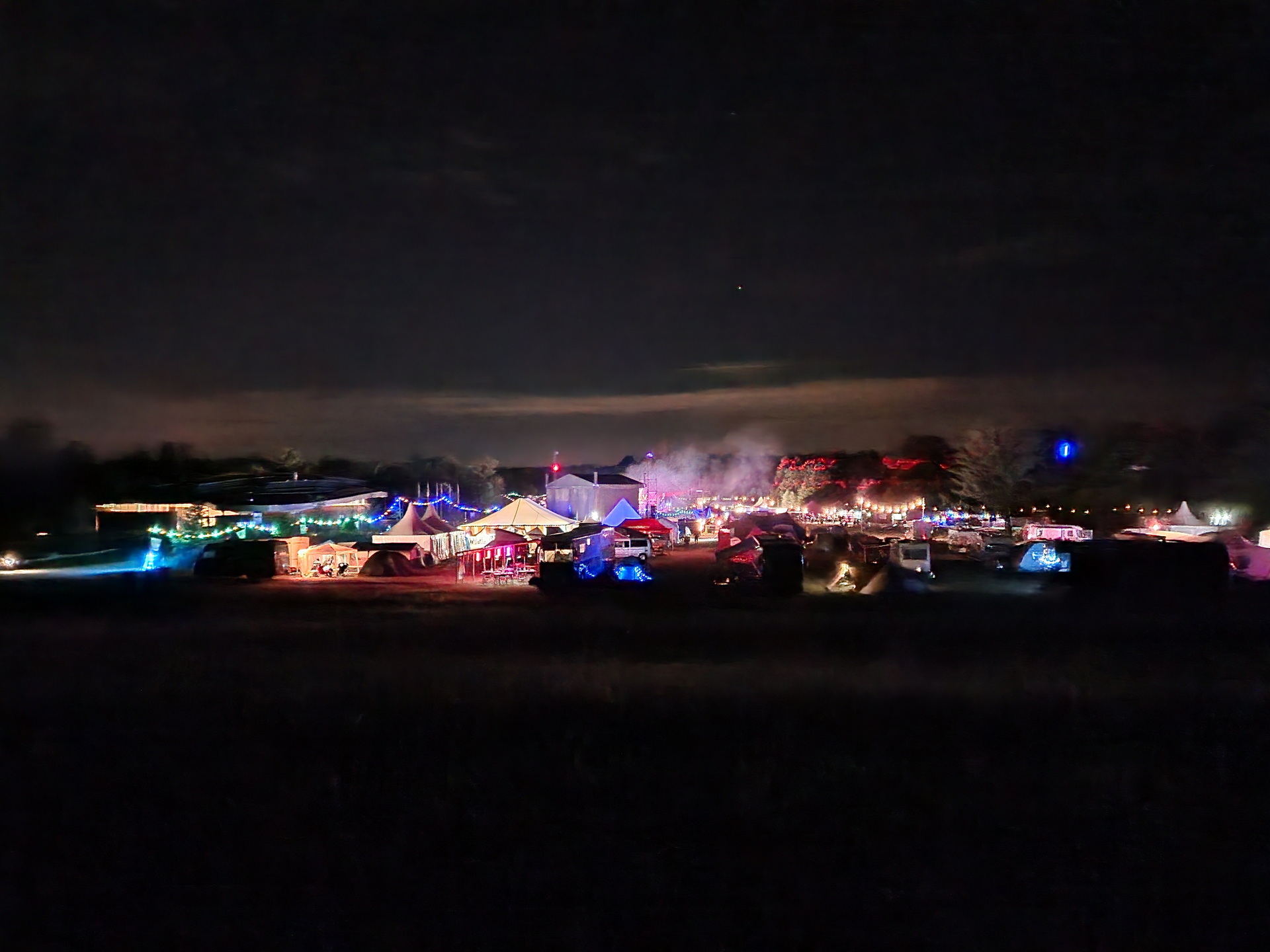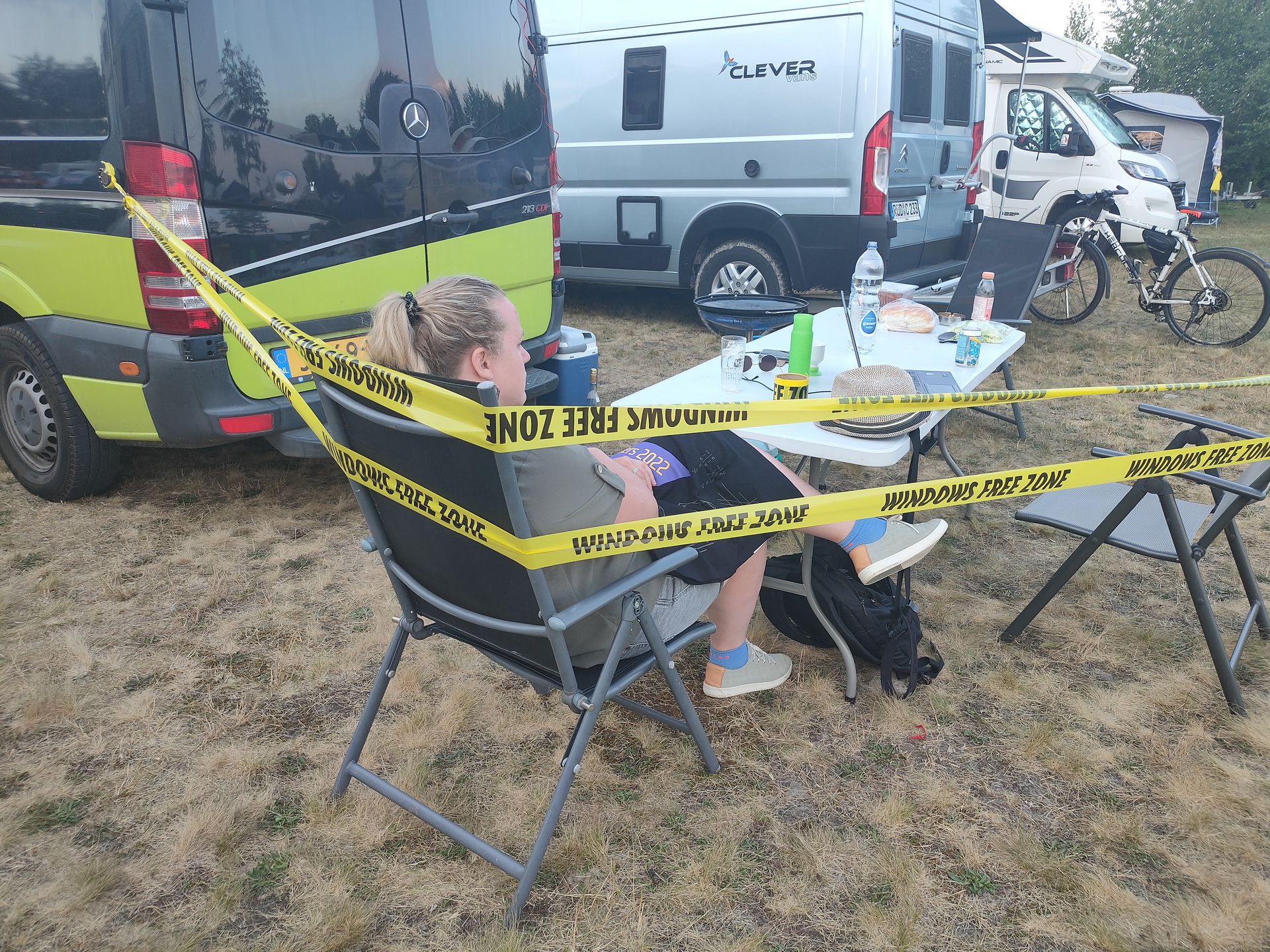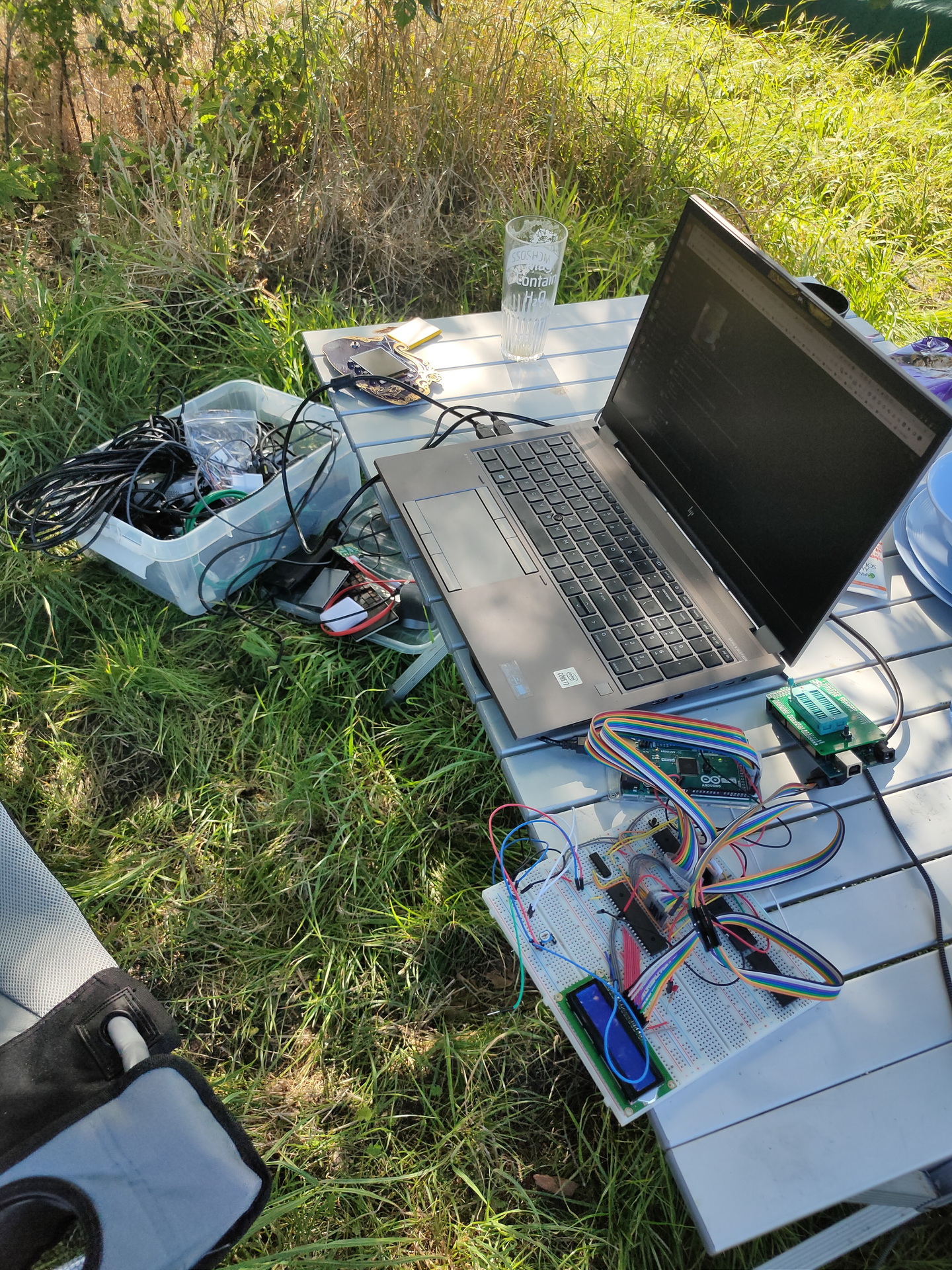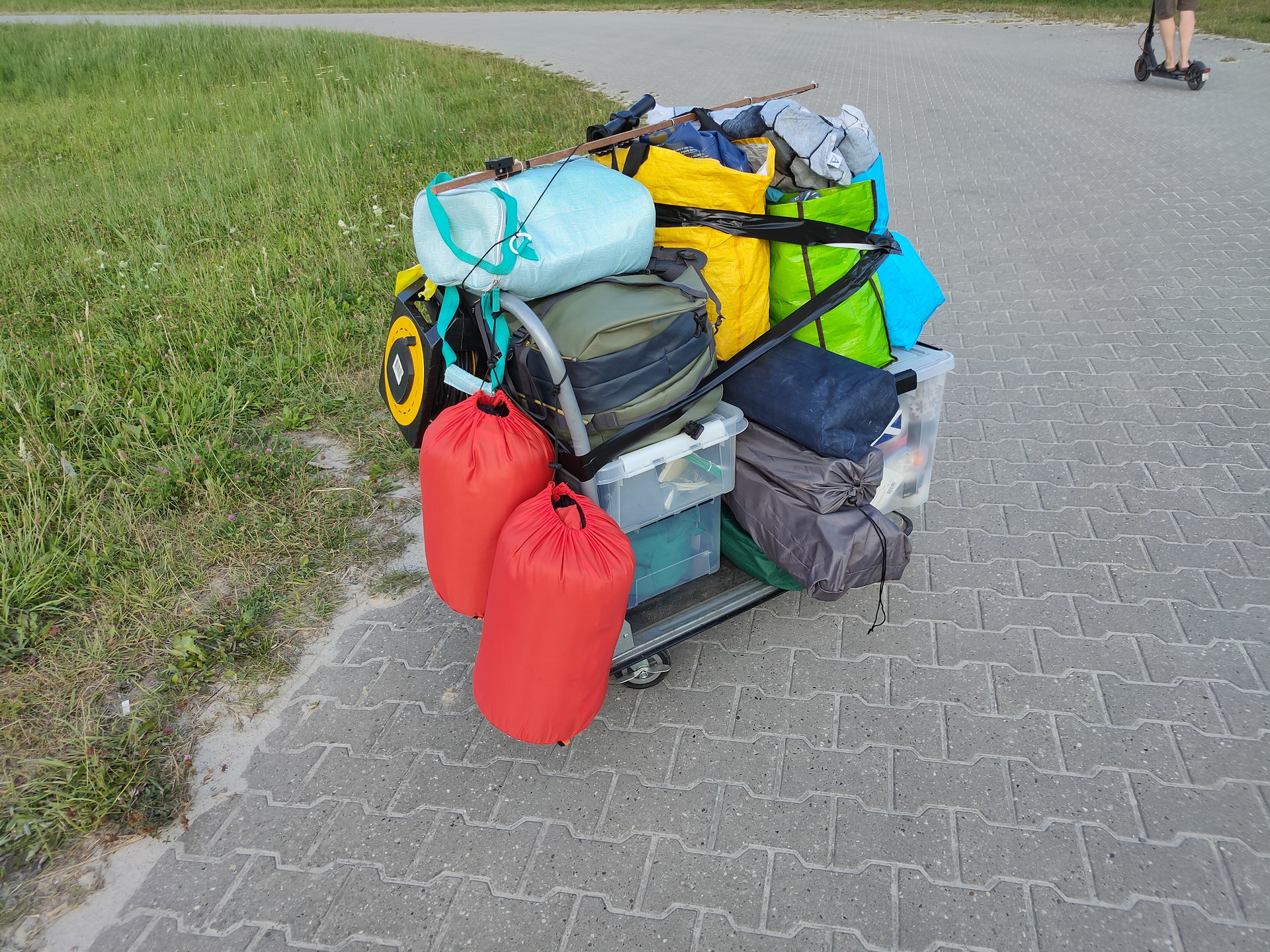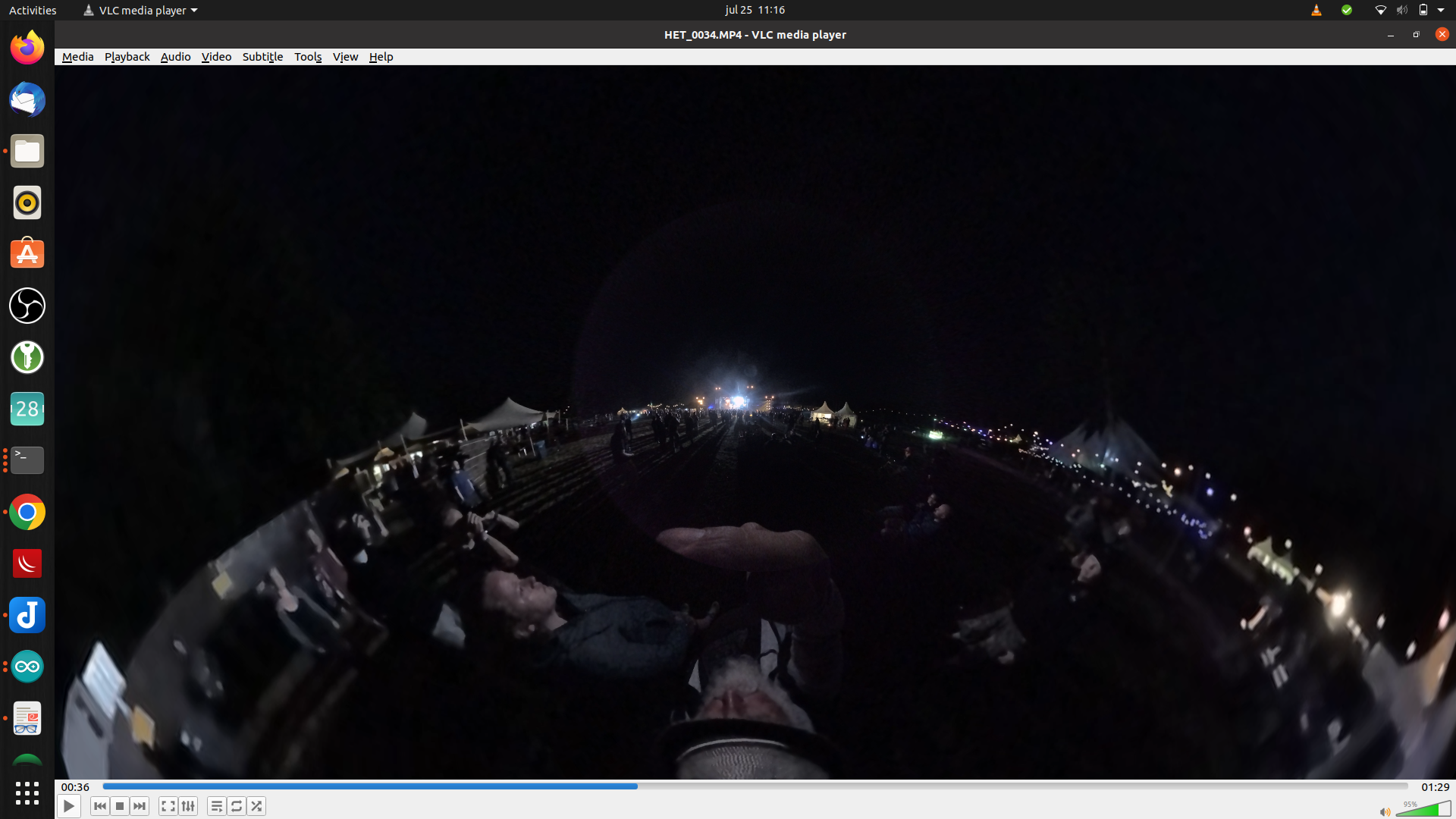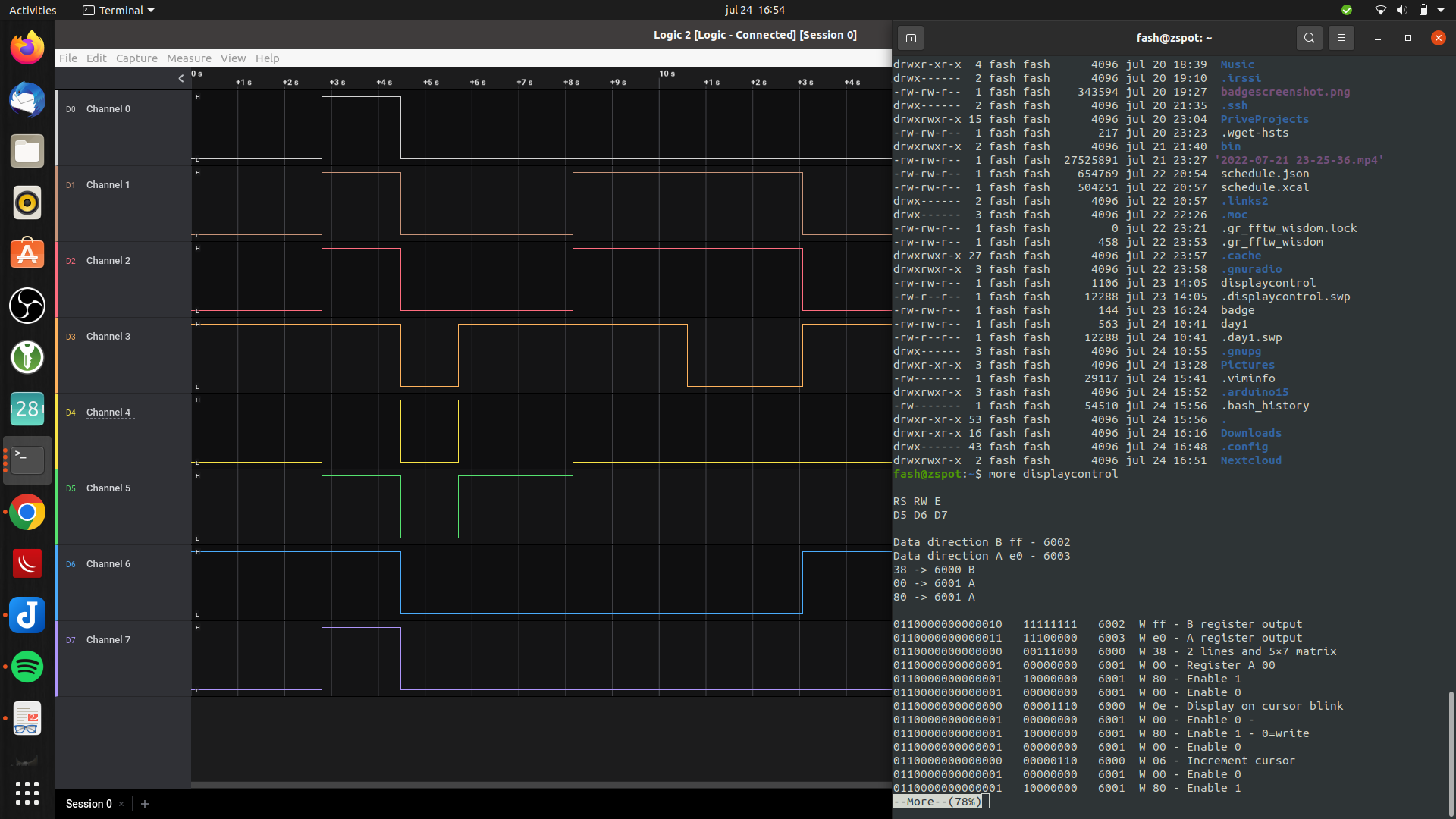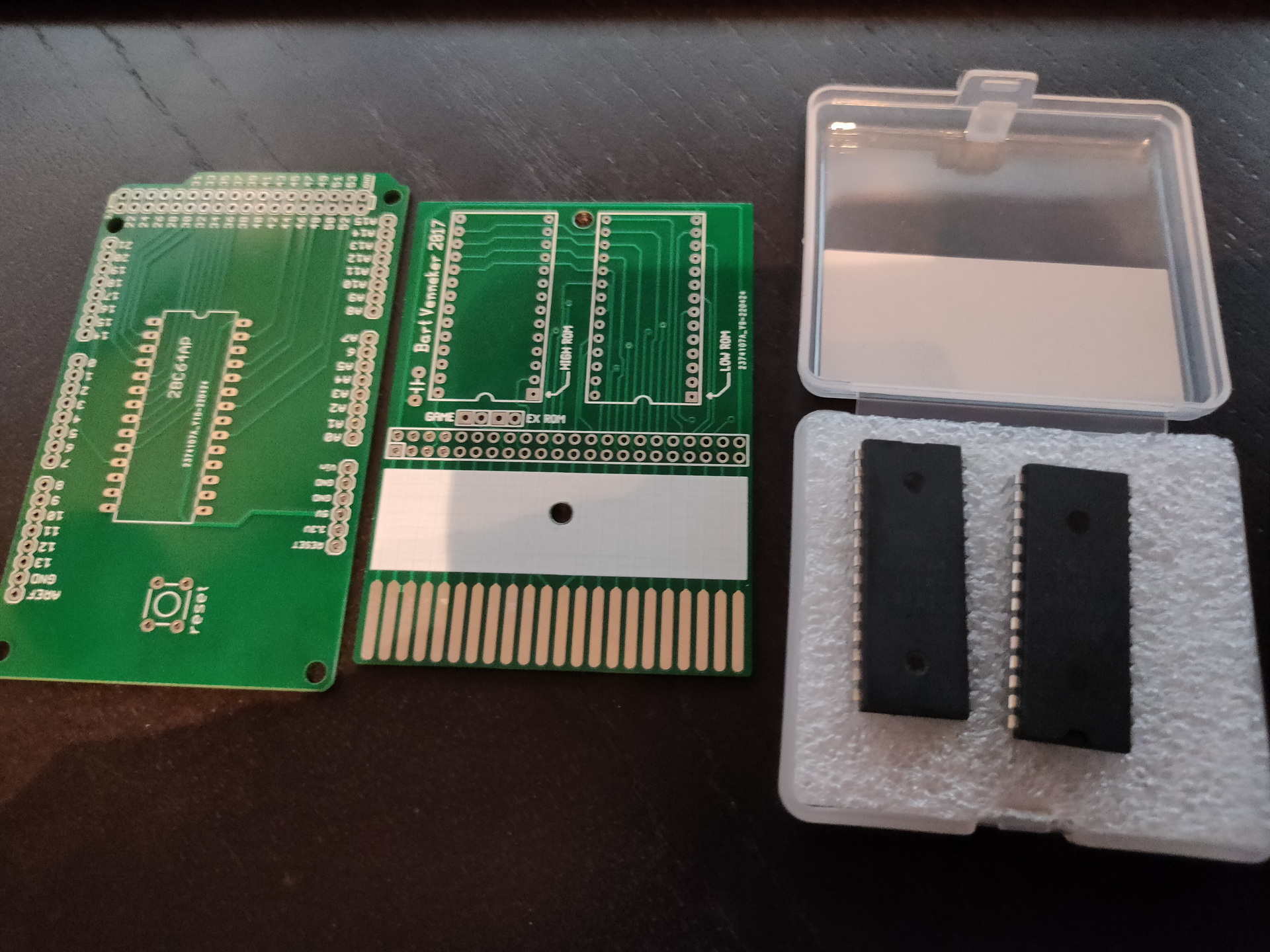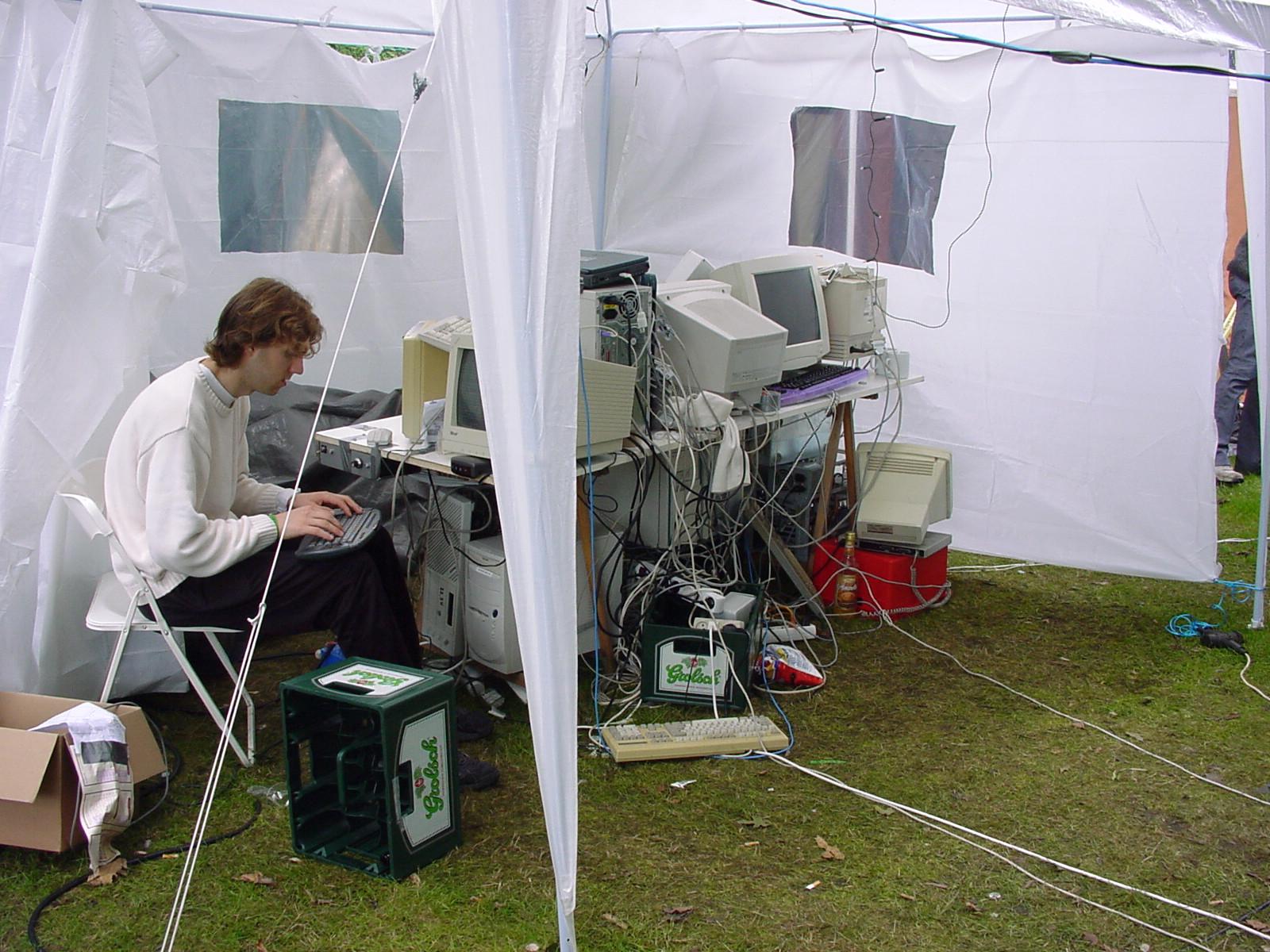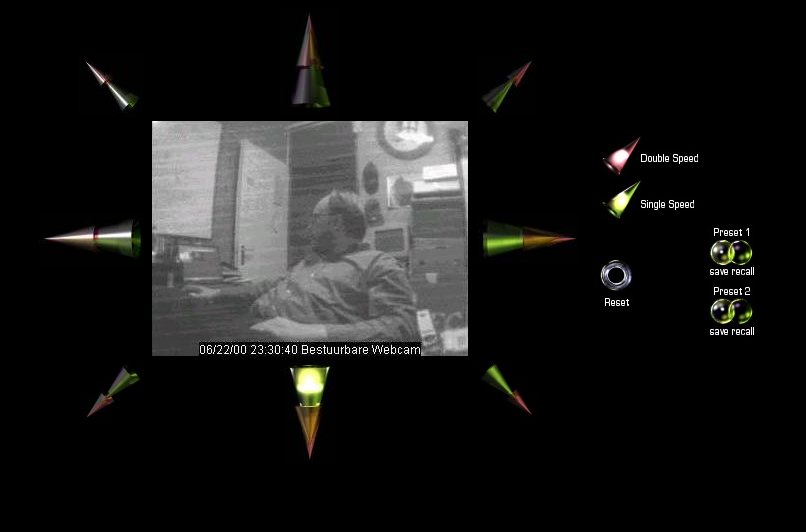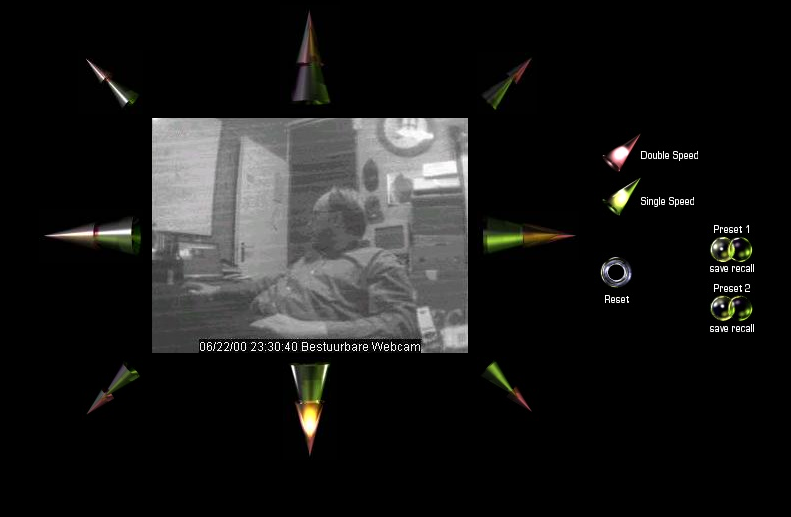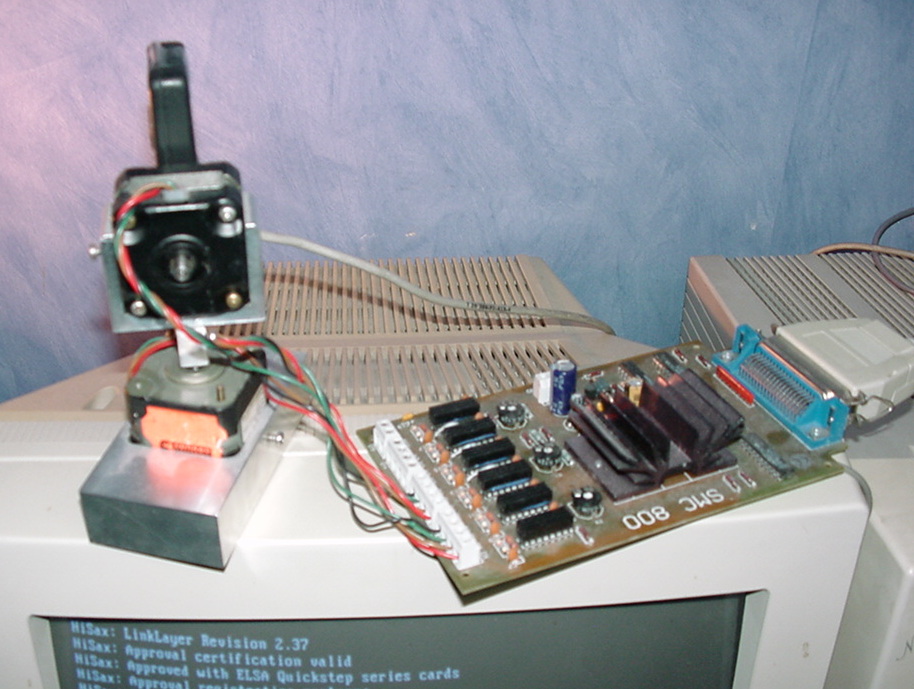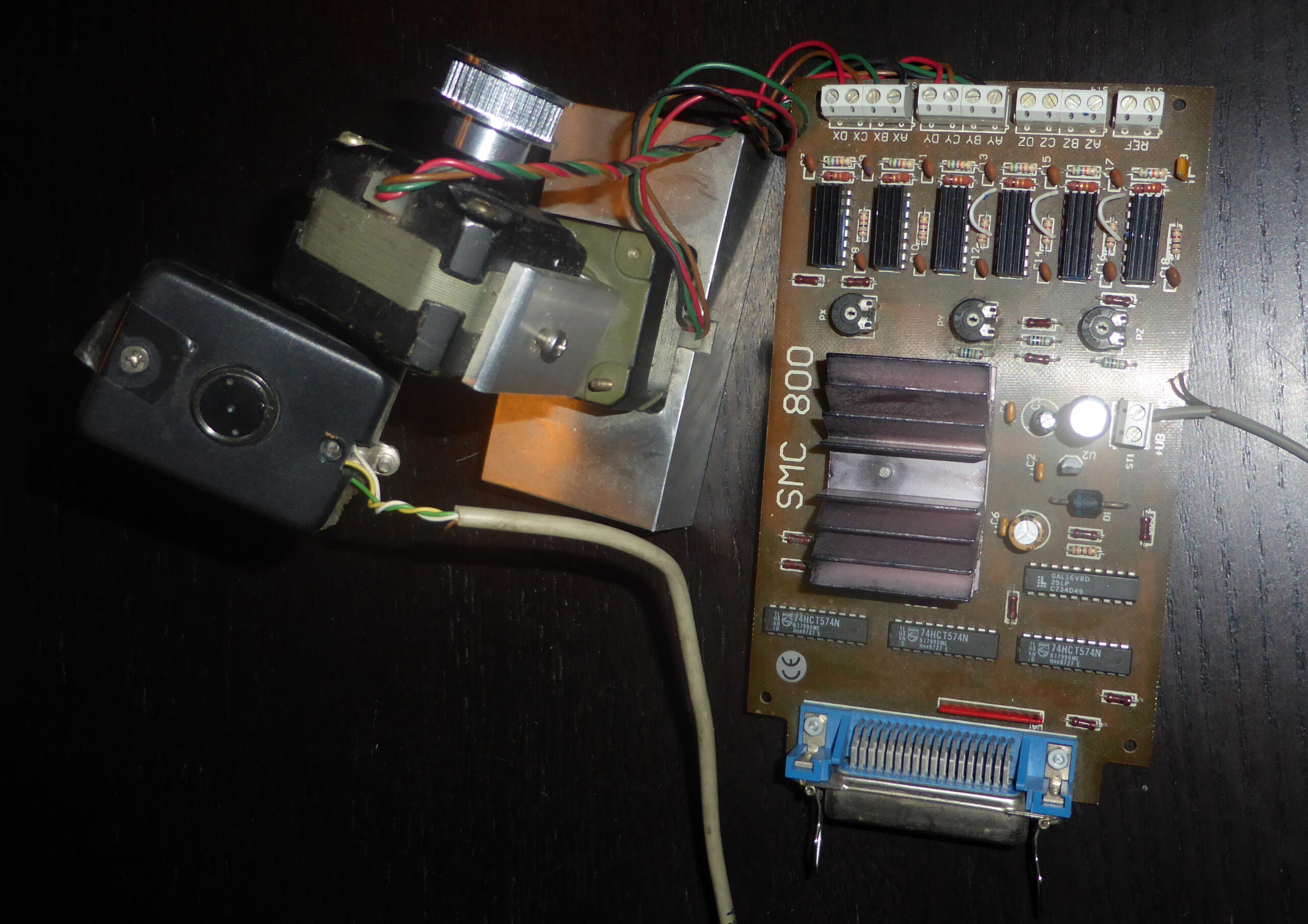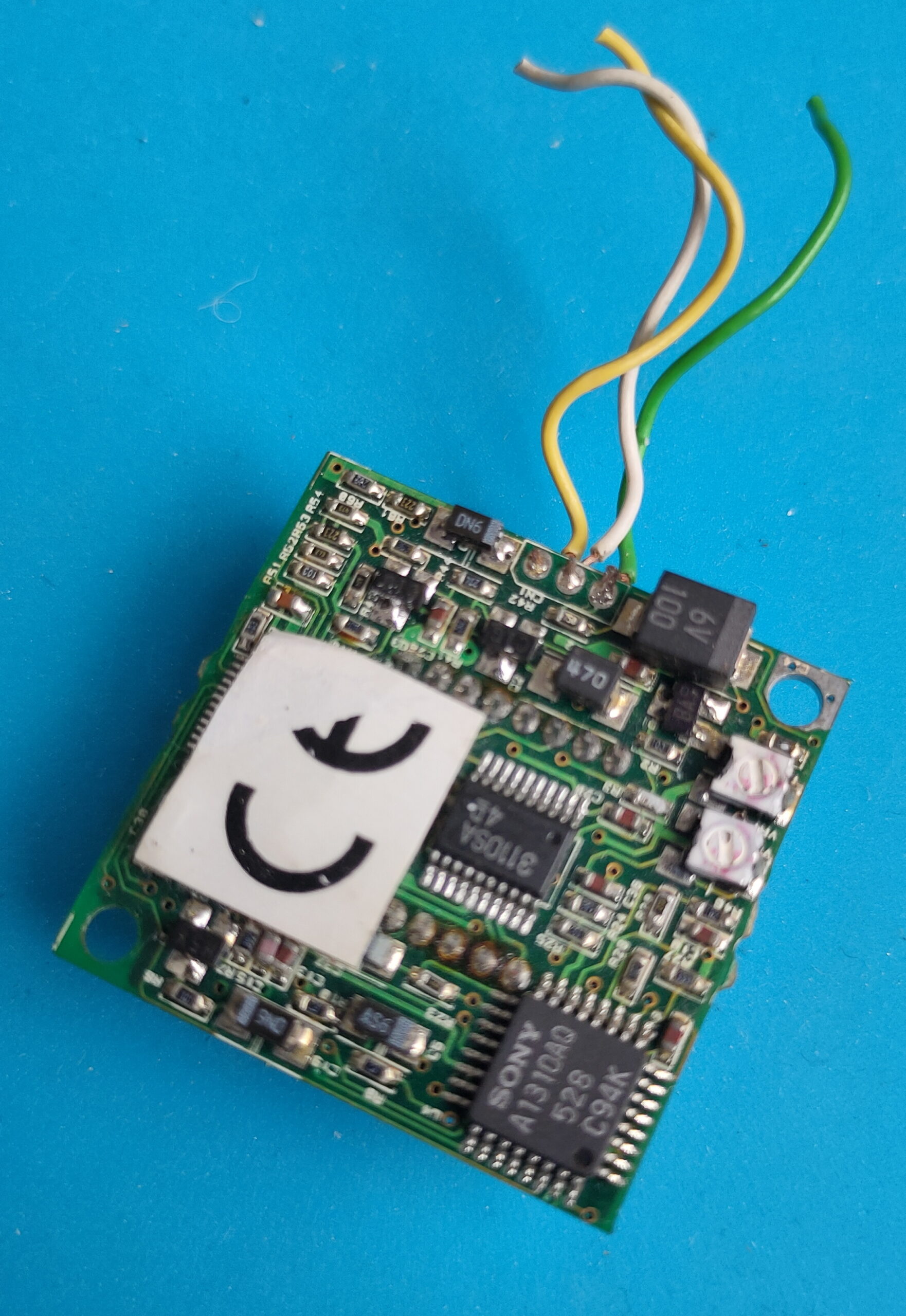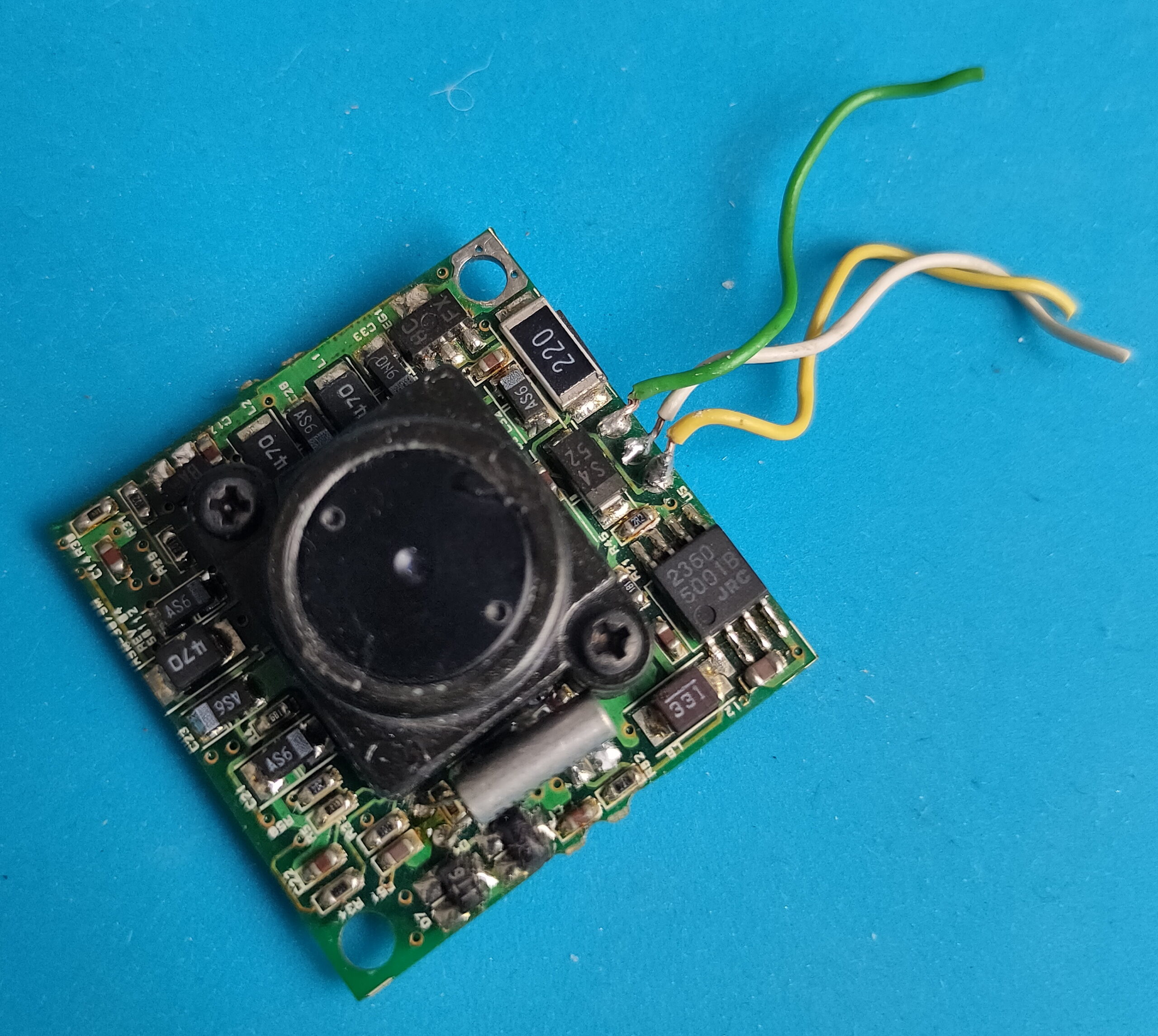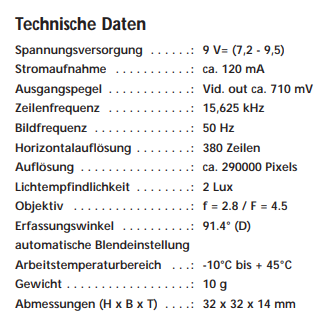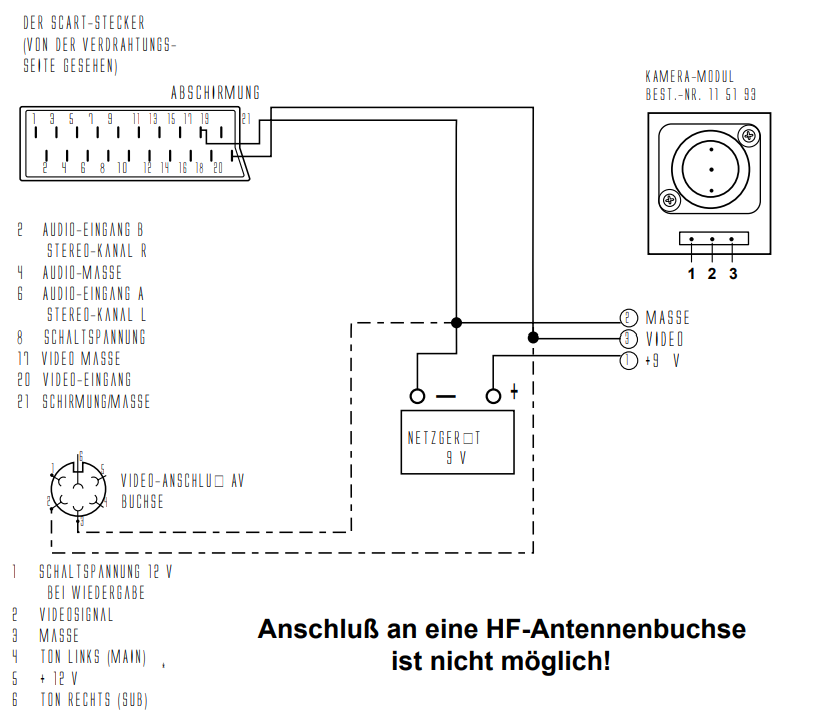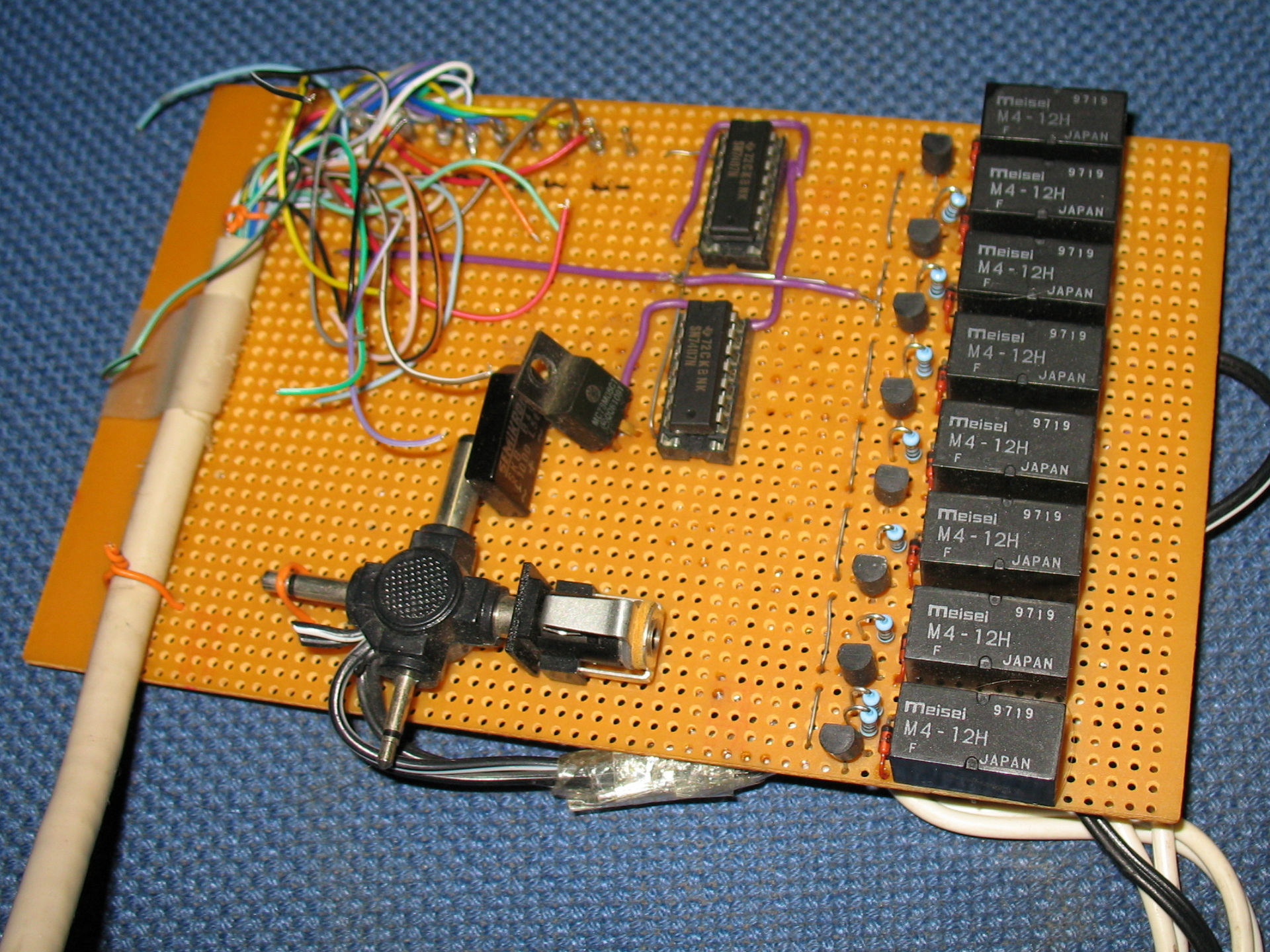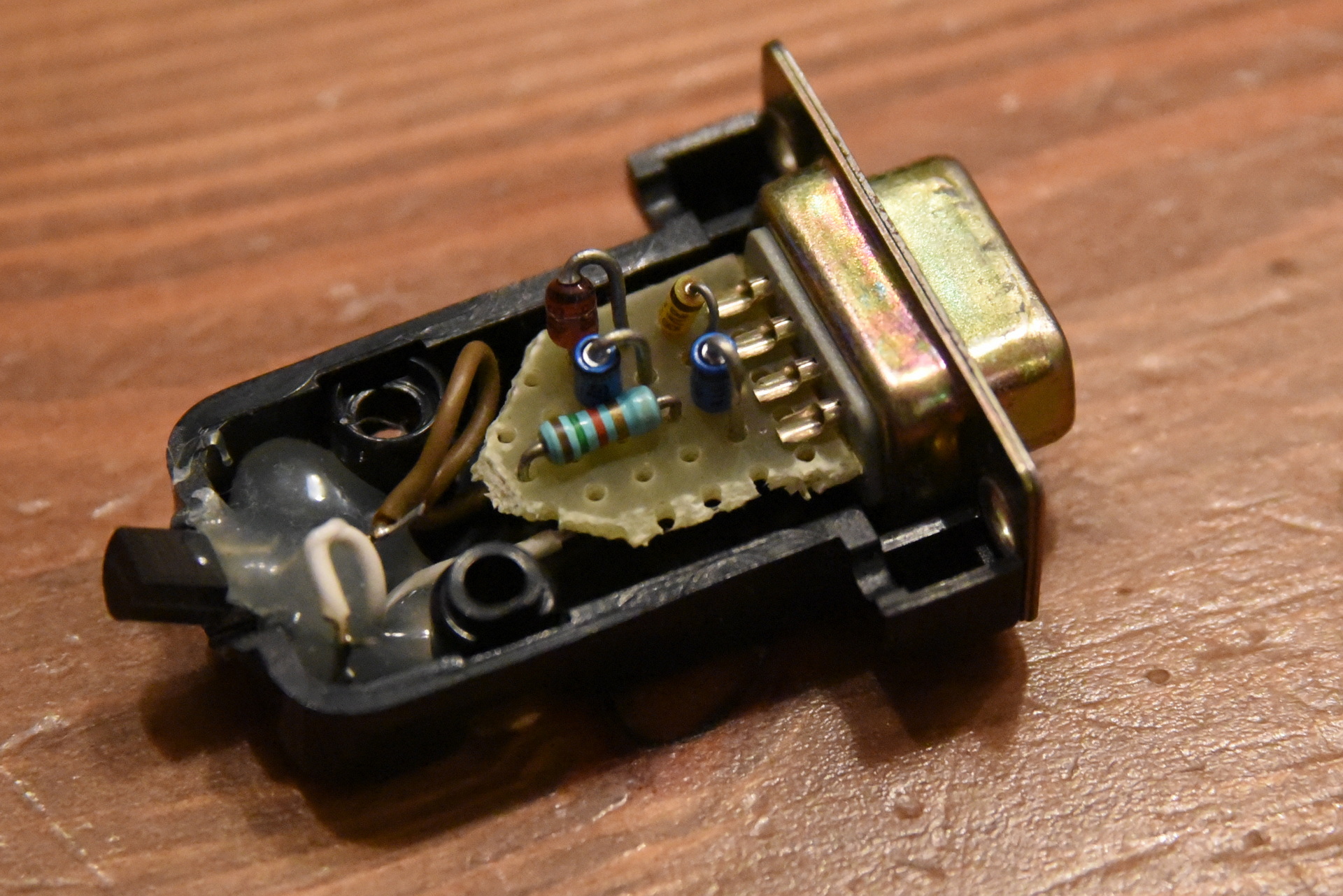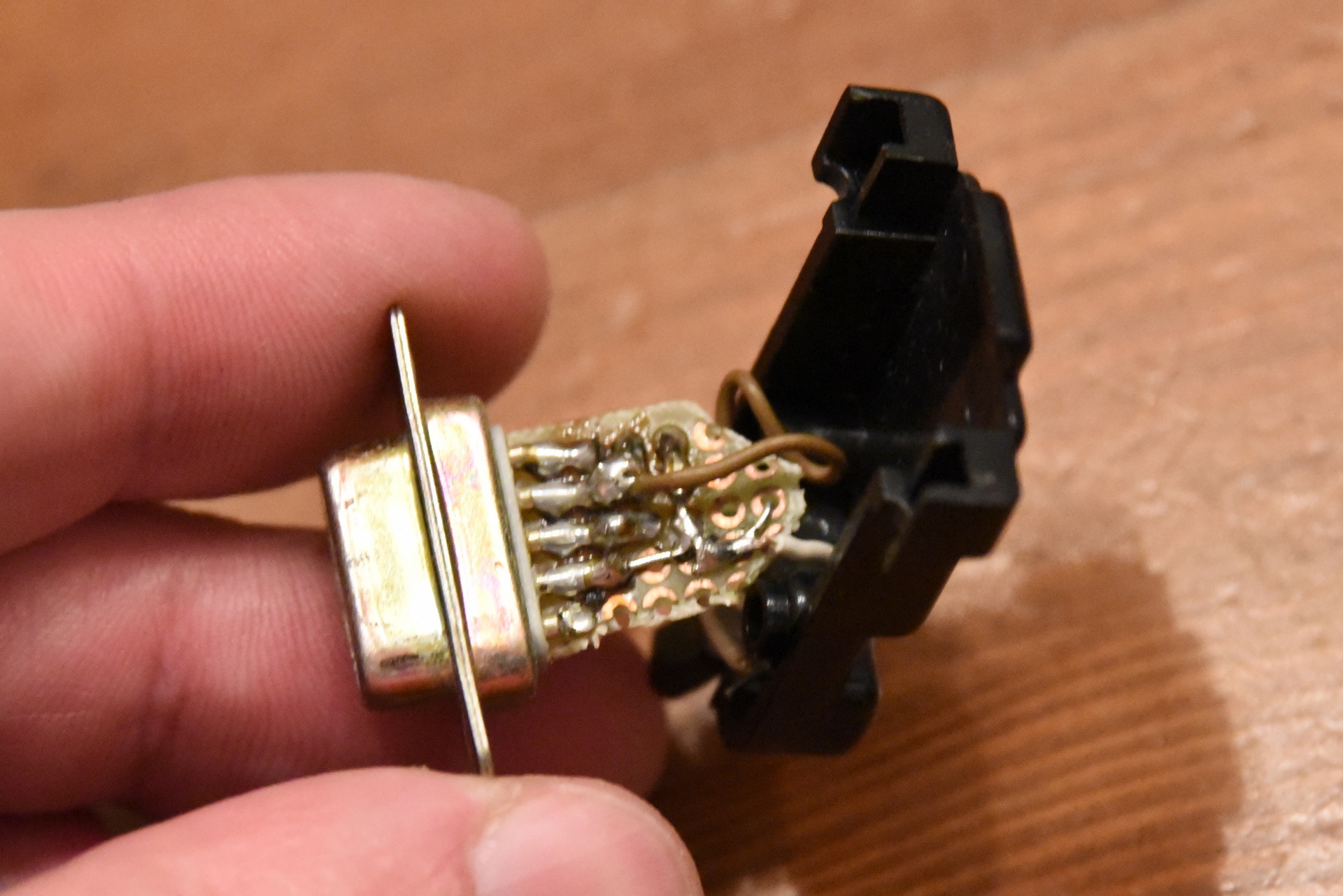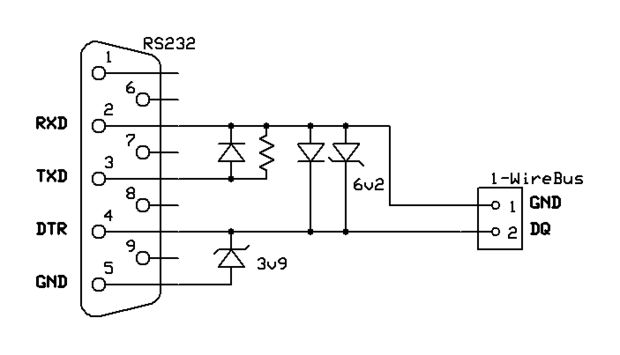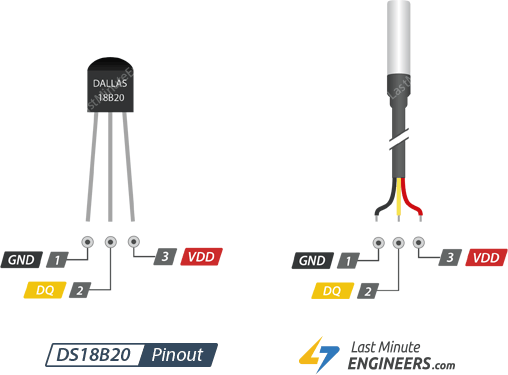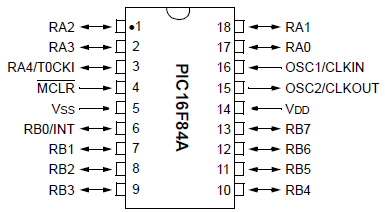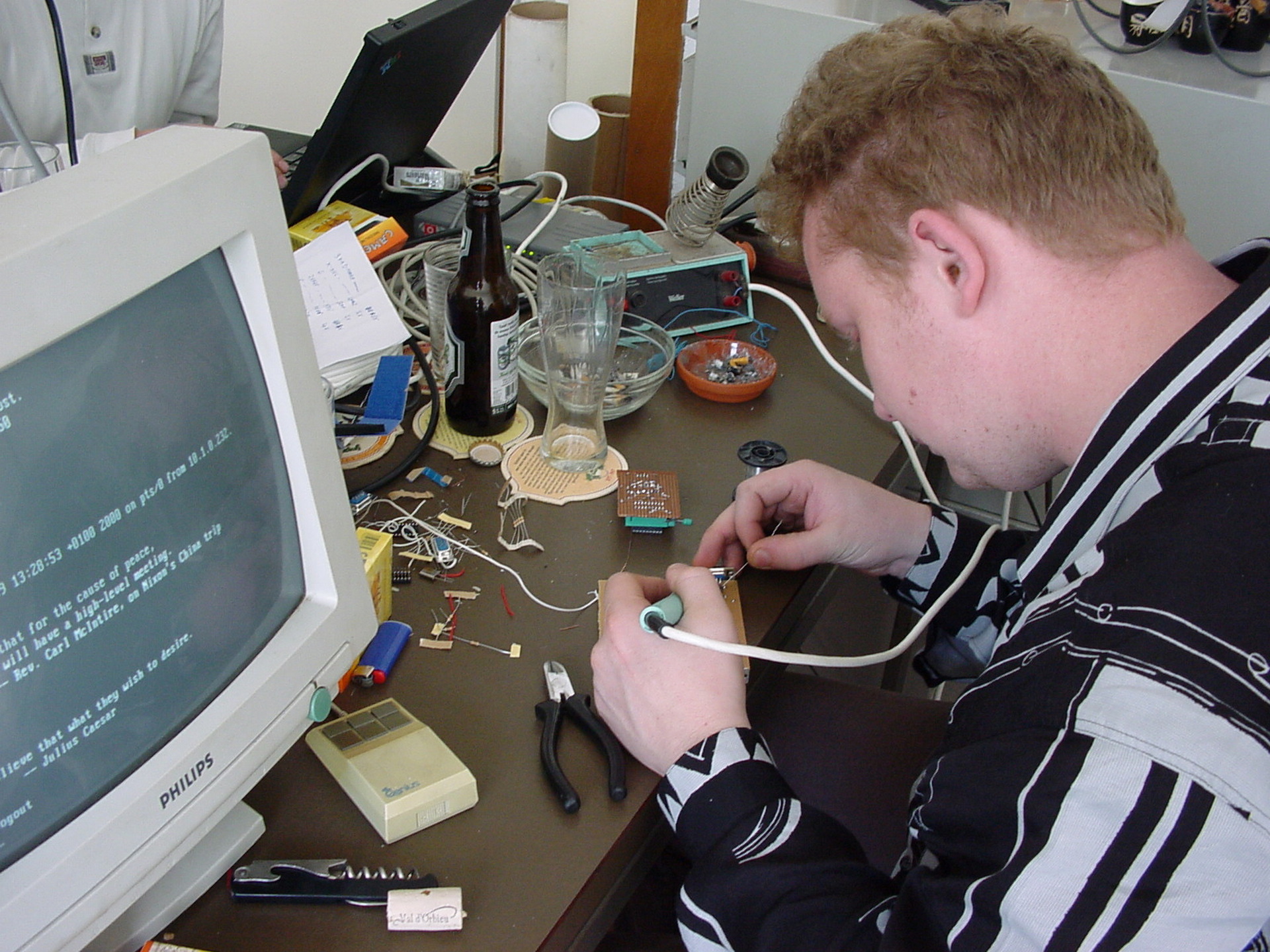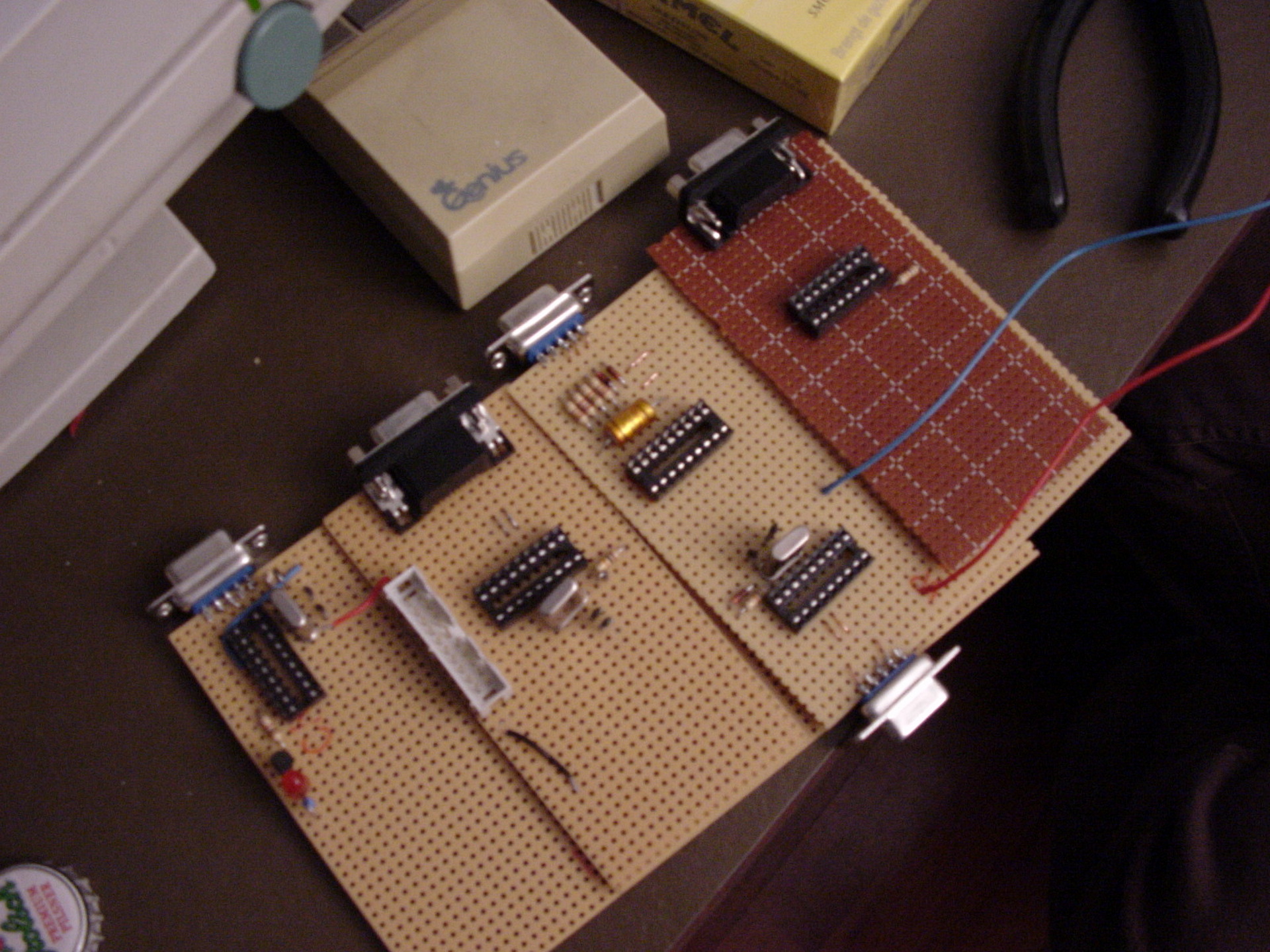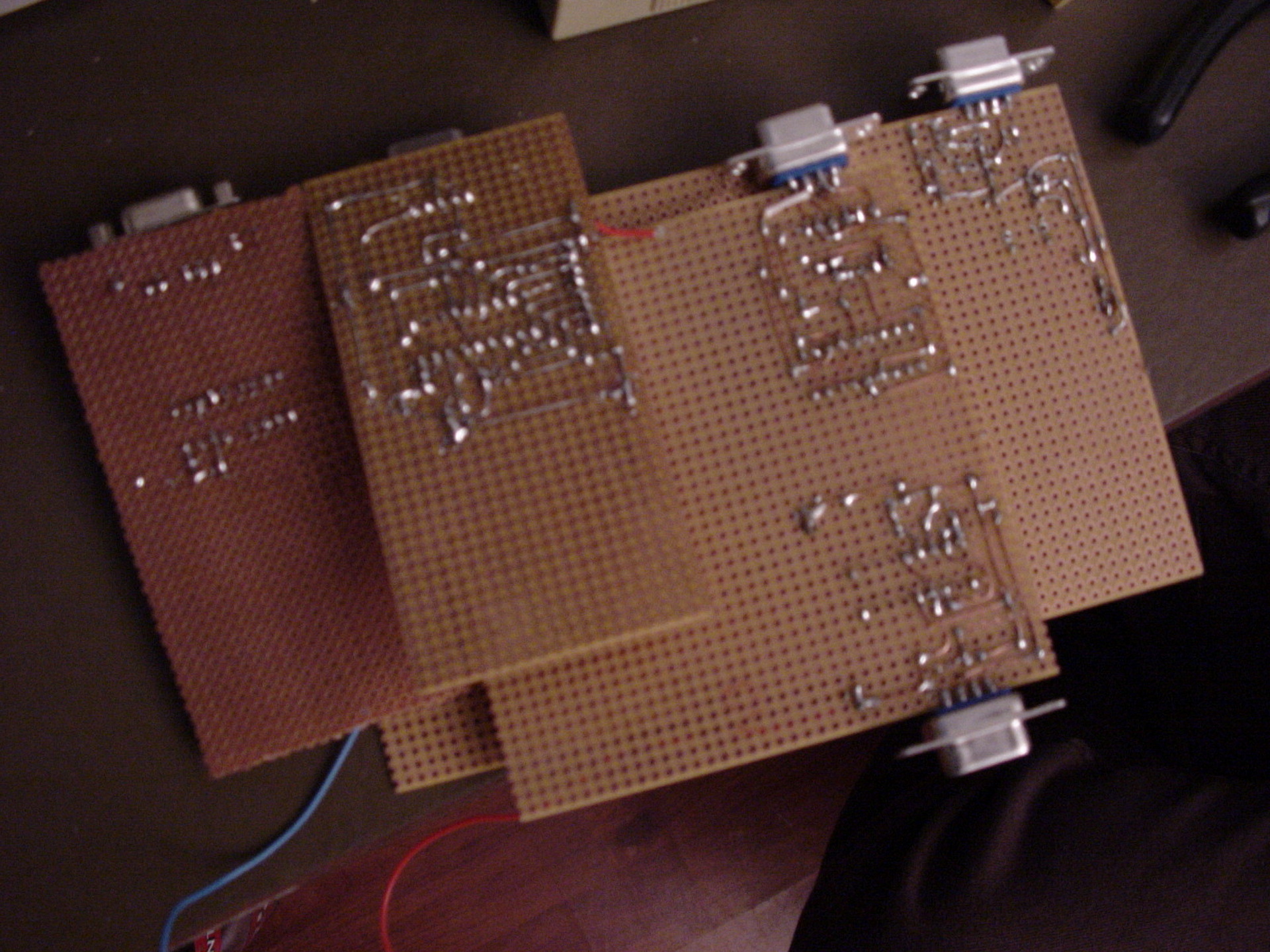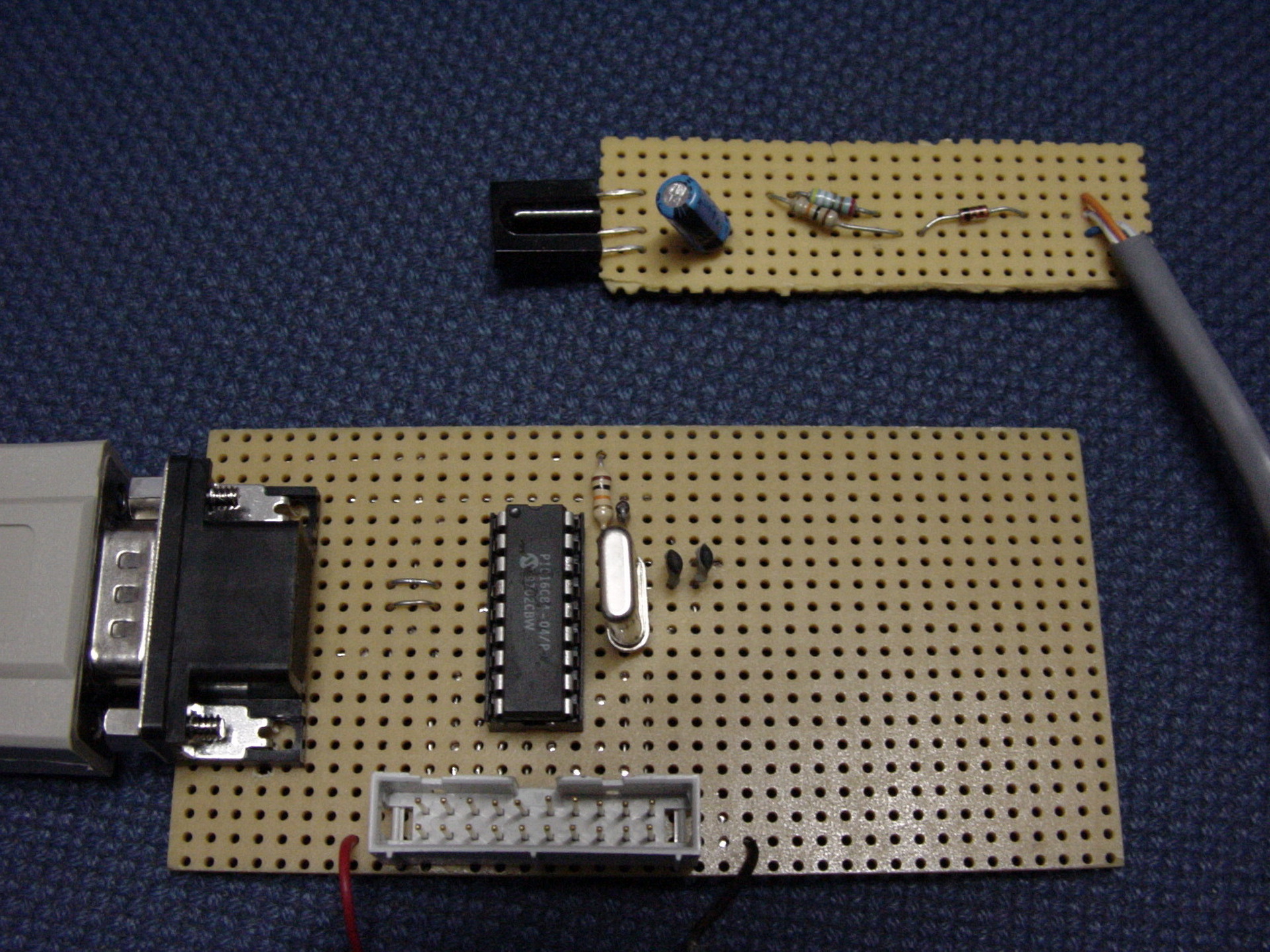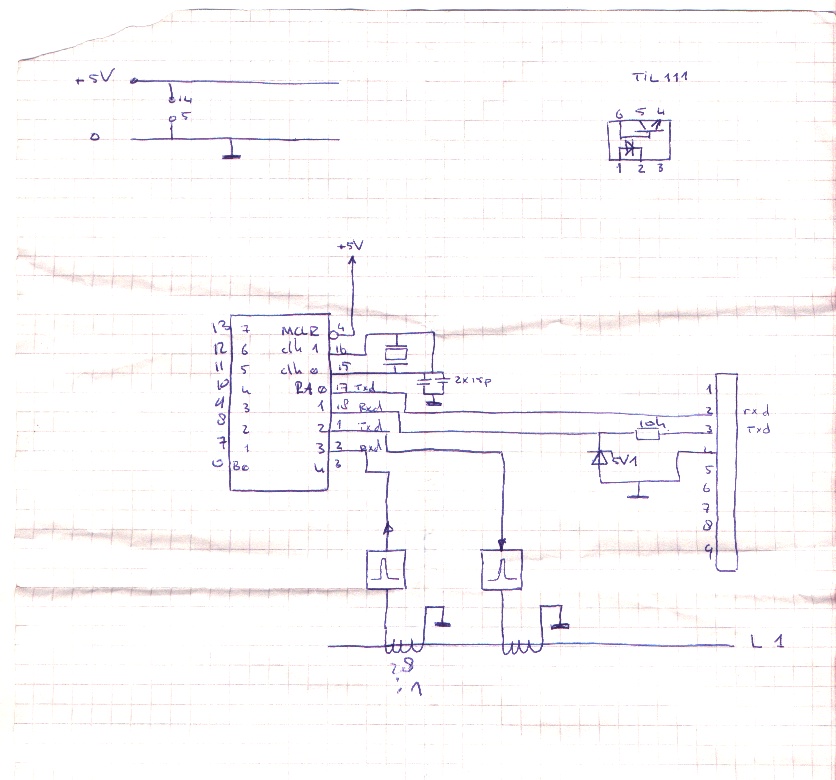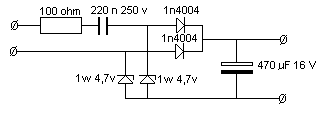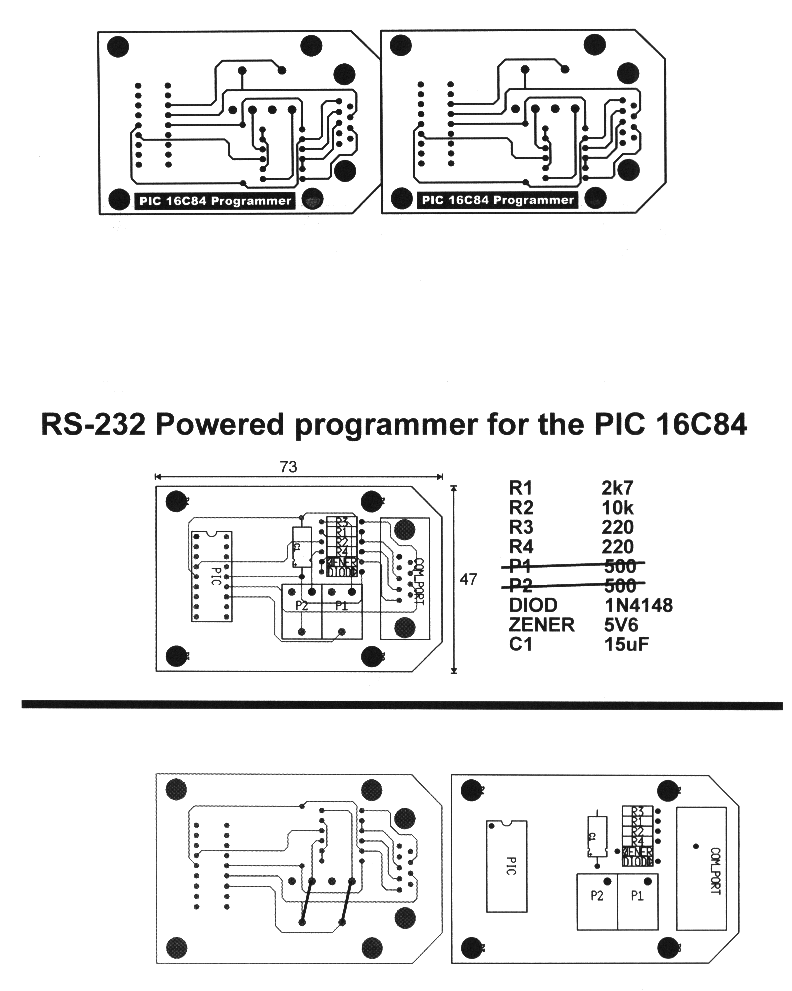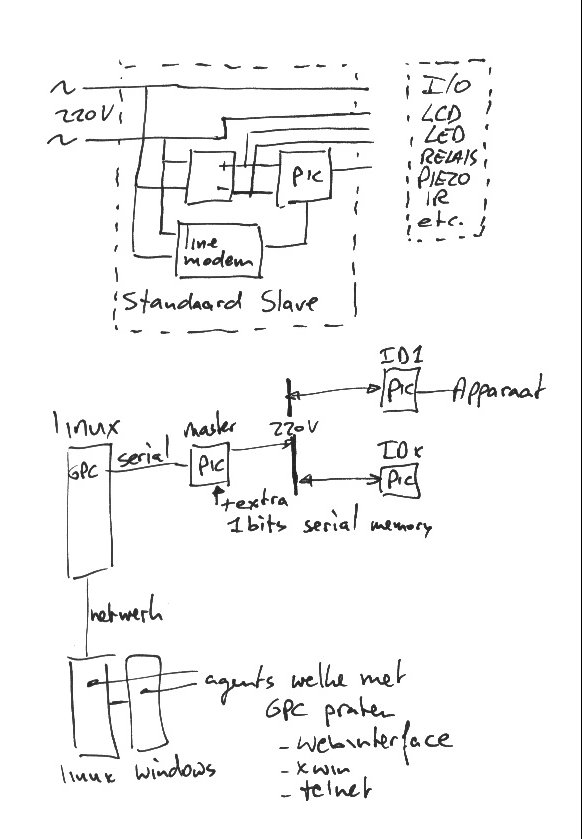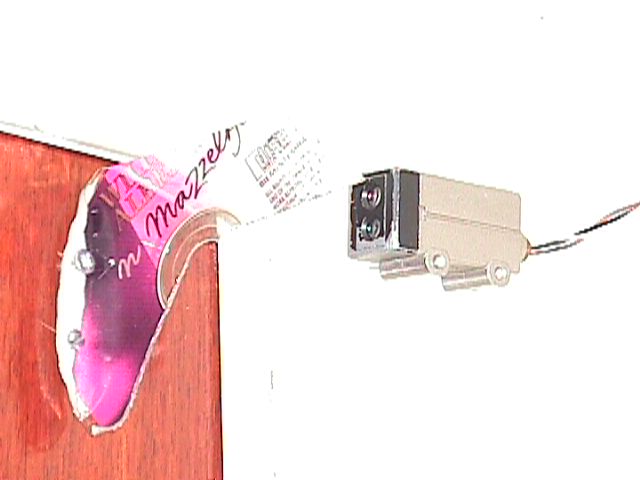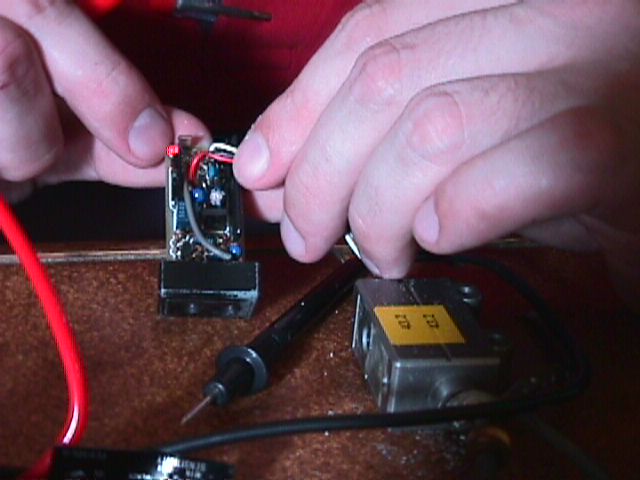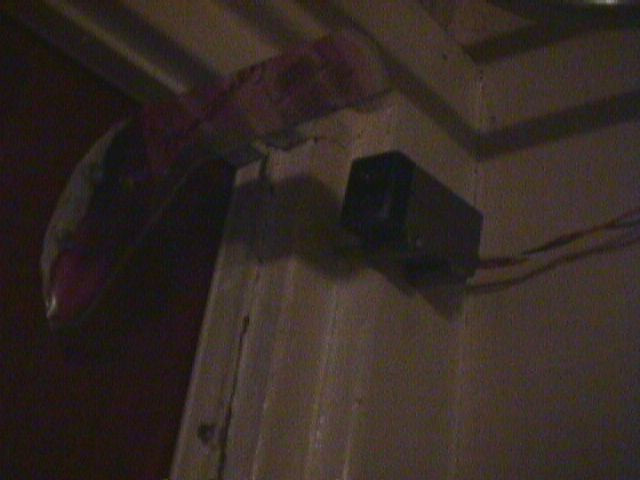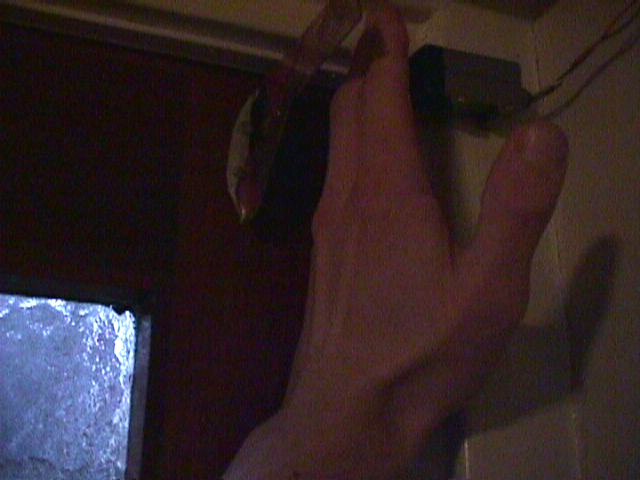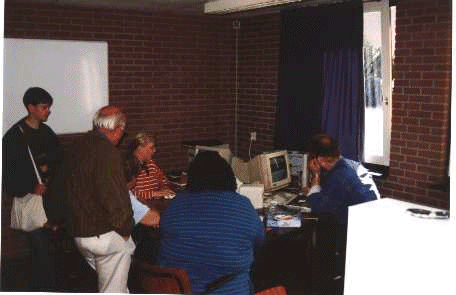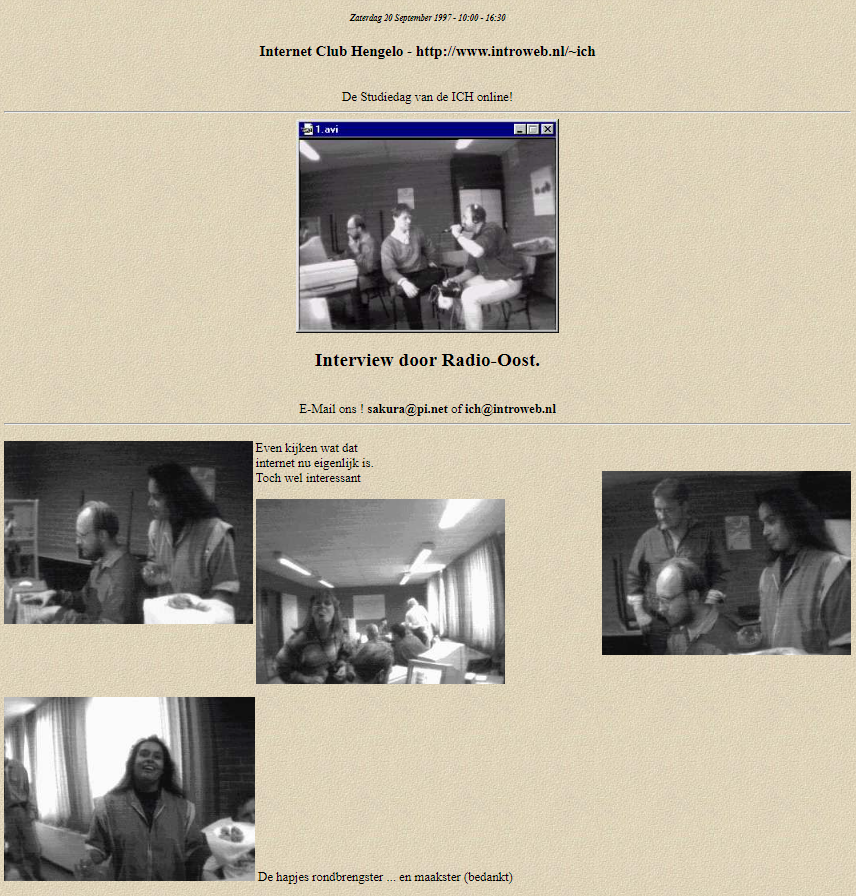While doing stuff like, making our home a little greener. Smoking meat. Working on diorama’s and my Escape game. I found time to make this little maze game.
Using an ESP32, mini joystick and a 8×8 led matrix. The objective is to get to the other side of the invisible maze.
It is a blind maze, so you have to figure out the path by trail and error. I found it quite fun and entertaining. (Coline had a hard time finishing the mode 3 maze)
I’ve got 3 settings on the maze:
0 – There is a trail where you have been.
1 – No trail, but only red leds showing walls.
2 – No trail, red reds and a reset to square 0,0 .. so you have to remember the path you previously took.
I’ll add code and schematics tomorrow …
Light blue shows you where you have been
Mode 2 game, reset when hitting a wall
Hitting the end block!
Maze is static at the moment, i’m planning to implement a “Recursive division method” to generate the maze.
Code
#include <Arduino.h>
#include <Adafruit_NeoPixel.h>
// joystick pins
int up=33;
int down=25;
int left=32;
int right=26;
int cursor=32;
// 0 easy = trail // 1 only red walls // 2 = reset to 0.0
int mode=2;
//int trail=32;
int trail=0;
// Which pin on the Arduino is connected to the NeoPixels?
#define LED_PIN 2
// How many NeoPixels are attached to the Arduino?
#define LED_COUNT 64
// Declare our NeoPixel strip object:
Adafruit_NeoPixel strip(LED_COUNT, LED_PIN, NEO_GRB + NEO_KHZ800);
// bits set opening in square
// 2
// -----
// 1 | | 4
// -----
// 0
// so 5 is a passage from left to right (1+4)
int maze[8][8] = {
4,5,3,6,5,5,5,3,
6,5,11,12,5,3,6,9,
14,1,12,5,3,10,12,1,
12,5,5,3,10,12,5,3,
2,6,5,9,14,5,1,10,
10,10,6,5,9,6,5,9,
12,11,10,6,1,10,6,1,
4,9,12,13,5,13,13,1,
};
int displaymatrix[8][8] = {
{ 0,1,2,3,4,5,6,7 },
{ 15,14,13,12,11,10,9,8 },
{16,17,18,19,20,21,22,23},
{31,30,29,28,27,26,25,24},
{32,33,34,35,36,37,38,39},
{47,46,45,44,43,42,41,40},
{48,49,50,51,52,53,54,55},
{63,62,61,60,59,58,57,56}
};
int x = 0;
int y = 0;
void setup() {
// joy
pinMode(32, INPUT_PULLUP);
pinMode(33, INPUT_PULLUP);
pinMode(25, INPUT_PULLUP);
pinMode(26, INPUT_PULLUP);
// mode set with jumpers
pinMode(34, INPUT_PULLUP);
pinMode(35, INPUT_PULLUP);
Serial.begin(115200);
strip.begin();
strip.show(); // Initialize all pixels to 'off'
strip.setBrightness(10);
// set begin and end pixel
strip.setPixelColor(displaymatrix[x][y], 0, 0, 255);
strip.setPixelColor(displaymatrix[7][7], 0, 255, 0);
strip.show();
//mode select
if (digitalRead(34) == 0) {
mode=0;
if (digitalRead(35) == 0) {
mode=2;
} else {
mode=1;
}
// finish effect
uint32_t Wheel(byte WheelPos) {
WheelPos = 255 - WheelPos;
if(WheelPos < 85) {
return strip.Color(255 - WheelPos * 3, 0, WheelPos * 3);
}
if(WheelPos < 170) {
WheelPos -= 85;
return strip.Color(0, WheelPos * 3, 255 - WheelPos * 3);
}
WheelPos -= 170;
return strip.Color(WheelPos * 3, 255 - WheelPos * 3, 0);
}
// reset to start (mode 2)
void reset2start() {
strip.setPixelColor(displaymatrix[x][y], 0, 0, 0);
strip.show();
x = 0;
y = 0;
strip.begin();
strip.show(); // Initialize all pixels to 'off'
strip.setBrightness(10);
strip.setPixelColor(displaymatrix[x][y], 0, 0, 255);
strip.setPixelColor(displaymatrix[7][7], 0, 255, 0);
strip.show();
}
// finish effect
void rainbow(uint8_t wait) {
uint16_t i, j;
for(j=0; j<256; j++) {
for(i=0; i<strip.numPixels(); i++) {
strip.setPixelColor(i, Wheel((i+j) & 255));
}
strip.show();
delay(wait);
}
}
void loop() {
int isUp = (bitRead(maze[x][y], 1));
int isRight = (bitRead(maze[x][y], 2));
int isDown = (bitRead(maze[x][y], 3));
int isLeft = (bitRead(maze[x][y], 0));
if (digitalRead(up) == 0) {
if (isUp == 1){
strip.setPixelColor(displaymatrix[x][y], 0, 0, trail);
x++;
if ( x > 7) { x=7;}
strip.setPixelColor(displaymatrix[x][y], 0, 0, 255);
strip.show();
} else {
strip.setPixelColor(displaymatrix[x][y], 255, 0, 0);
strip.show();
if (mode == 2){
delay(1000);
reset2start();
}
}
}
if (digitalRead(down) == 0) {
if (isDown == 1){
strip.setPixelColor(displaymatrix[x][y], 0, 0, trail);
x--;
if ( x < 0) { x=0;}
strip.setPixelColor(displaymatrix[x][y], 0, 0, 255);
strip.show();
} else {
strip.setPixelColor(displaymatrix[x][y], 255, 0, 0);
strip.show();
if (mode == 2){
delay(1000);
reset2start();
}
}
}
if (digitalRead(left) == 0) {
if (isLeft == 1){
strip.setPixelColor(displaymatrix[x][y], 0, 0, trail);
y--;
if ( y < 0) { y=0;}
strip.setPixelColor(displaymatrix[x][y], 0, 0, 255);
strip.show();
} else {
strip.setPixelColor(displaymatrix[x][y], 255, 0, 0);
strip.show();
if (mode == 2){
delay(1000);
reset2start();
}
}
}
if (digitalRead(right) == 0) {
if (isRight == 1){
strip.setPixelColor(displaymatrix[x][y], 0, 0, trail);
y++;
if ( y > 7) { y=7;}
strip.setPixelColor(displaymatrix[x][y], 0, 0, 255);
strip.show();
} else {
strip.setPixelColor(displaymatrix[x][y], 255, 0, 0);
strip.show();
if (mode == 2){
delay(1000);
reset2start();
}
}
}
if (x ==7 && y == 7){
strip.begin();
strip.show(); // Initialize all pixels to 'off'
rainbow(20);
}
delay(200);
}
